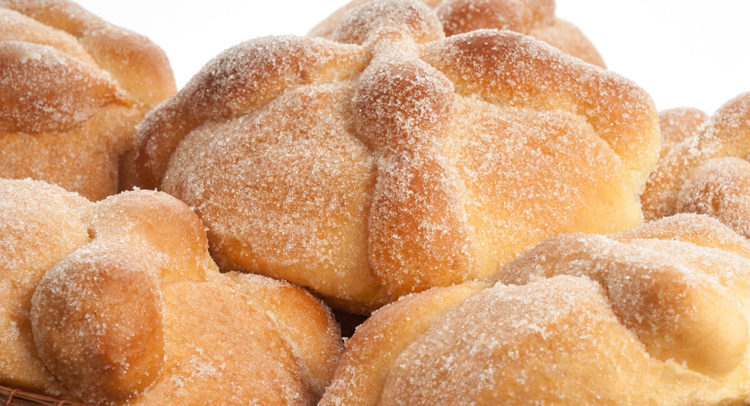The Day of the Dead is approaching, and since mid-September we have begun to find in bakeries the delicious bread of the dead in different varieties: sugary, without sweets, with sesame seeds, stuffing and in small or large sizes.
Tasting this Mexican food is a delicious tradition in homes, and, now, it has even been placed in most delicatessen menus with exotic combinations, but do you know the meaning of the bread of the dead?
The bread of the dead that we usually see, especially in Mexico City and the State of Mexico, is round and represents the cycle of life. The Federal Consumer Procurator’s Office mentions that the bread of the dead is a fraternal offering in the shape of a tomb in which the skull is at the top and on the edges there is a simulation of bones.
This type of bread is sprinkled with white or pink sugar, as the color depends on the region.
The National Commission for the Development of Indigenous Peoples points out that the pink color of sugar “recalls the ceremonial use of red color in pre-Hispanic times”.
It is important to mention that throughout the national territory the bread of the dead varies depending on the region. In Aguascalientes, Baja California, Colima, Coahuila, Jalisco, Nayarit and Chihuahua, the bread of the dead is traditionally round.
So also the names vary a little, like in Mixquic (Mexico City) , the famous “disheveled”; at State of Mexico the “deaths”; in Texcoco the “bunny rabbit”; in Guerrero the “shrimps”, “tortas” and “amargosas”; in Tixtla the “souls with sugar”; in Acámbaro, Guanajuato, the “souls”; in Hidalgo, you “hang” them;
In Michoacán the “bread of offering”, “the bread of rubber”; in Oaxaca the “reprimanded” or the “cassava bread”; and in Puebla the “golletes”.
According to the National Commission for the Development of Indigenous Peoples, the bread of the dead that we know today would be a “huitlatamalli”, a kind of tamale, of the pre-Hispanic cultures of Mexico.
Source: Punto Medio











